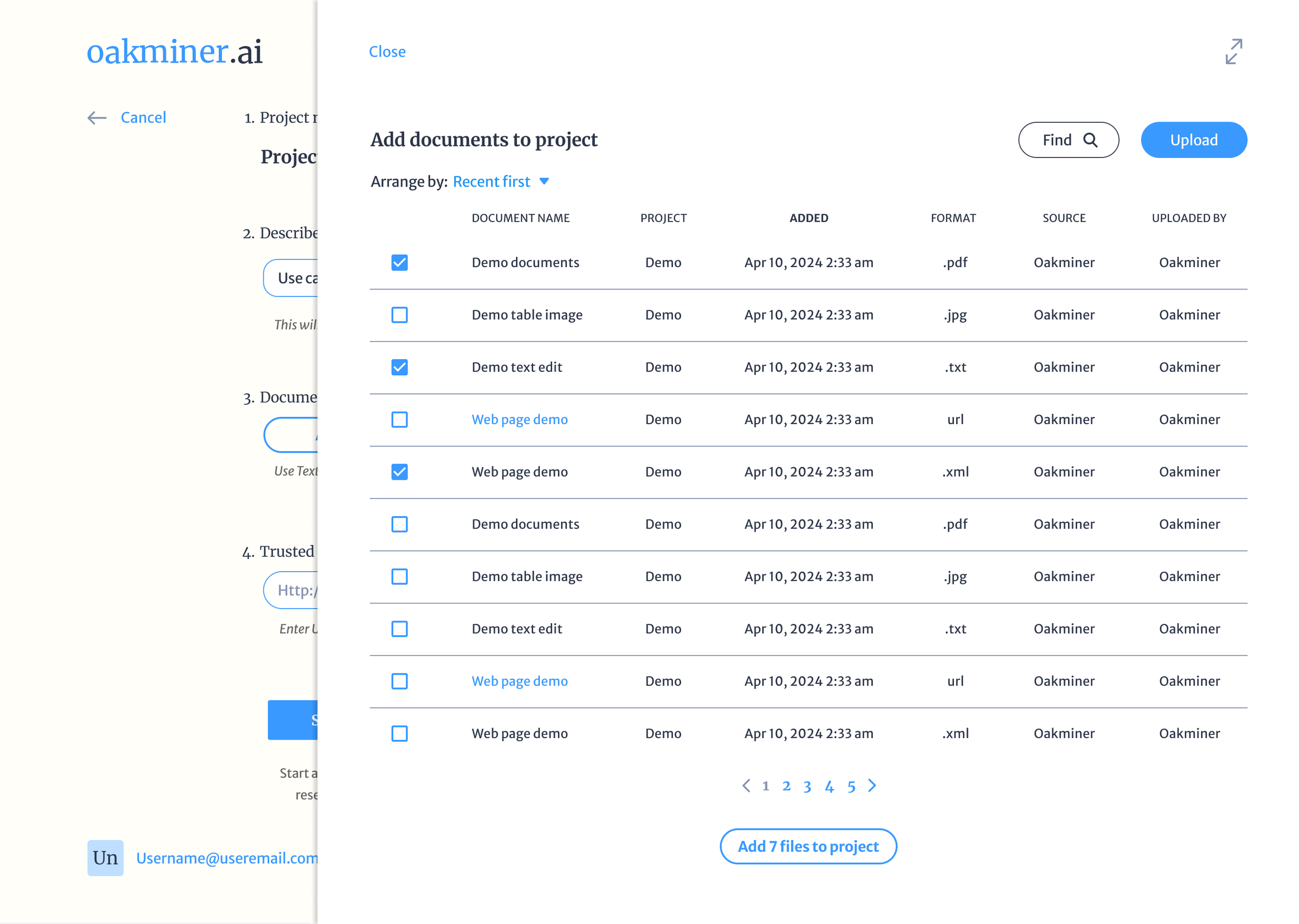Oakminer AI
Product: AI augmented insights platform
Role: Head of Design
Scope: Web platform, AI chat.
oakie.ai
An early-stage startup revolutionizing the way organizations leverage the expertise of their most valuable employees.
Expert knowledge in specialized professional fields is valuable but limited in reach. OakminerAI captures how these experts research and make decisions, automating workflows and training employees to share specialized knowledge across your entire organization.
Preliminary research
User Research & Use Cases
We conducted interviews and flow modeling in FigJam, Deep interviews, shared documentation, and hands-on testing with LLM tools helped assess technical knowledge, significantly shaping the product's UX.
Competitive research
Ongoing exploration of branding and usability strategies in LLM/AI chat interfaces, including ChatGPT, Claude, Gemini, Copilot, SlackBot, Notion, Adobe AI, and Intercom.
I’ve collected some of my insights into a short review, published on Bootcamp: Contemporary usability challenges for Chat & LLM-powered applications
Technological literacy and practice
Personally, I felt like I needed some primer on LLMs and Conversational AI. I read research papers and did hands-on testing with GPT workflows, datasets, and our own platform iterations to evaluate strengths and weaknesses.
Close collaboration with our prospective users was essential to understand their complex workflows.
Collaborating with users/partners
Problem space & user needs.
Novice employees need efficient access to expert-level knowledge and decision-making processes, because direct expert training is often limited by time and cost constraints
We had identified organizations working and comparing large amounts of written material, such as Contract attorneys, Policy lobbyists, and Investment firms among our use-cases.
Our target users for the first phase of the product were the Expert managers, willing to interact with AI on their end to end process.
The Experts has a broad understanding of the required process, are target-oriented and know the appropriate workflows to use, as well as the ability to discern between a logical response and an hallucination.
User workflow example
Wireframes & Mockups
Our day-to-day relied on the notion that mockups turn vague ideas into actionable goals.
Throughout the process, I have used the learnings from interviews and research to evolve user flows and scripts into wireframes.
The styling of the wireframes suited the audience and the purpose of the discussion. For example, developers would sometimes get overwhelmed by too much details, but, investors wanted to see a market-ready experience with high level of details.
Wireframes and mockups
Interaction workflow example
Designing Conversational UX
Conversational UX design focuses on creating intuitive and engaging dialogues between humans and machines. It combines UX principles, linguistics, and AI technologies to craft interactions that feel humane and natural.
So, why did we use a conversational interface?
Currently, LLMs primarily use a chat interface for user interaction. Exploring the possibilities of LLM UI opens up many considerations and expectations, both for users and the product team. Our observations suggested that we could use chat as a primary mode of interaction, but we must preserves some principles in order to mitigate potential usability challenges.
Clarity & Confidence
LLMs are a new technology, and so, it lacks the credibility of older, more seasoned platforms. To gain the trust of our users, we developed a few strategies to help users test and verify the results.
Guidance & Context
We wanted the UX be self-explanatory, and have the LLM push for progress and engagement. This also helps the system to learn more about the user’s preferences.
Persona & Tone of Voice
We had to balance between the AI’s roles as both a student and a teacher, depending on the user. We framed the agent’s tone as Friendly, Helpful and Trustworthy.
Fallback Strategies
We needed to create flows that addressed potential technology challenges. Issues like lag, hallucinations, and inaccuracies. Alerts should engage the users and keep them in the loop.
Similarly, the Save, Re-generate, Copy, and Feedback tools serve a dual purpose: they enhance user functionality and, with tracking, allow the product team to assess the AI's performance and develop changes.
Putting it all together
Setting out to connect design decisions into workflows.
Design system & components library
Working with components made my work much easier. Setting up a style library based on Atomic Design concepts and evolving it to create increasingly complex components helped the engineers feel grounded when developing frontend. Not all states made it in to earlier iterations, but the growing library helped the developers and myself move quickly, test and validate our product.
Impact
0-1
In the course of 6 months, we built the live, front-end experience of Oakie AI.
Real Users
Once our closed beta was complete, many of our advisors became clients.
Acceleration
Flexible design system enabled us to iterate and scale the product quickly.













